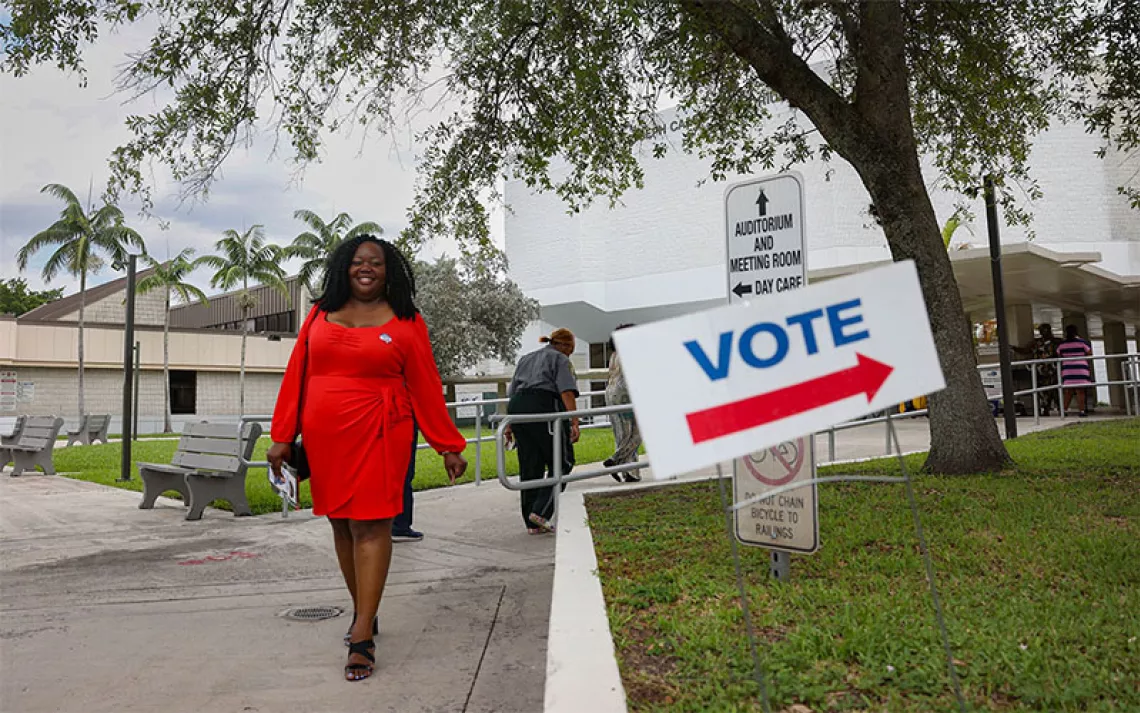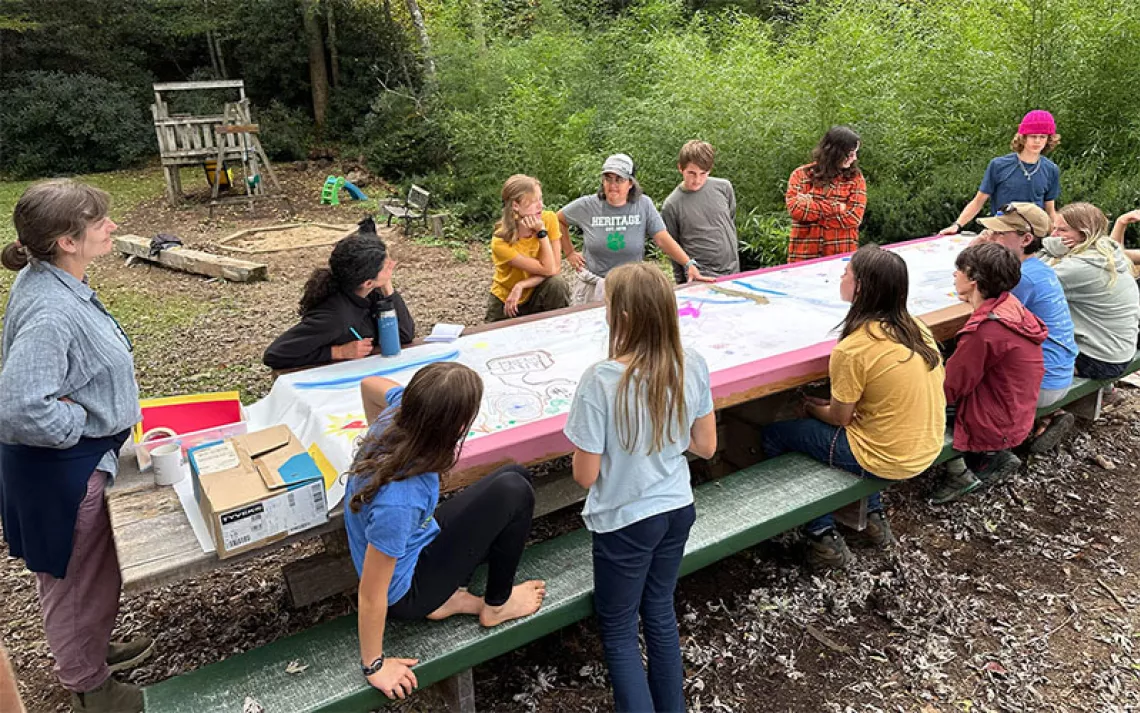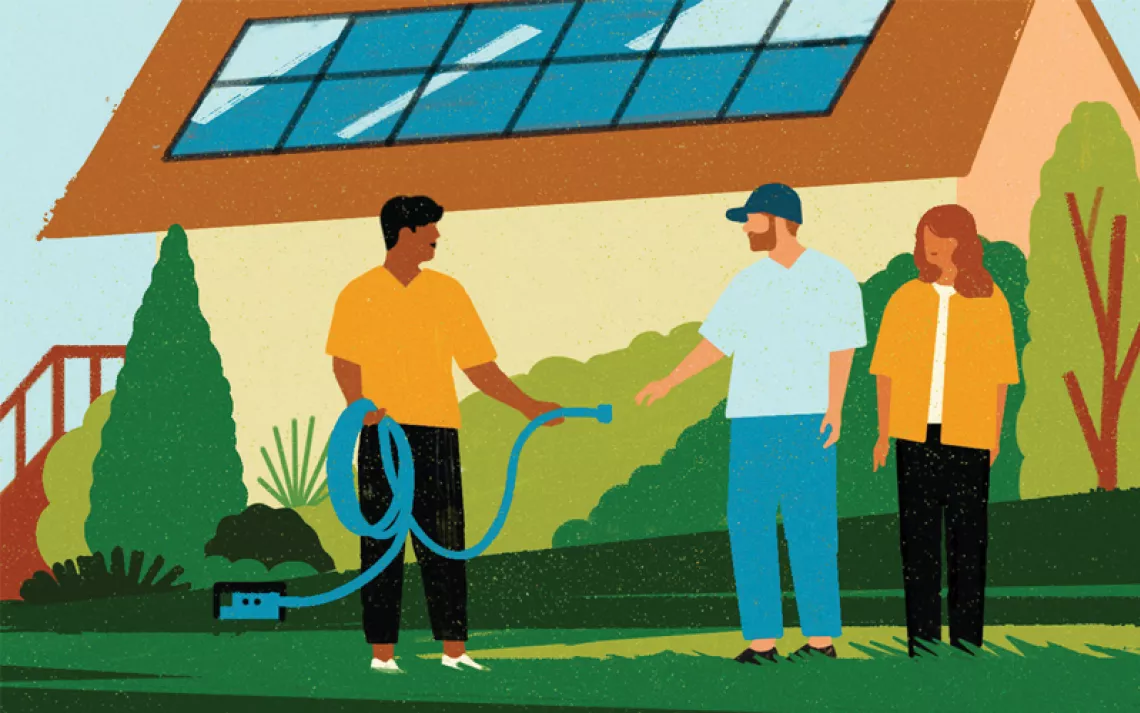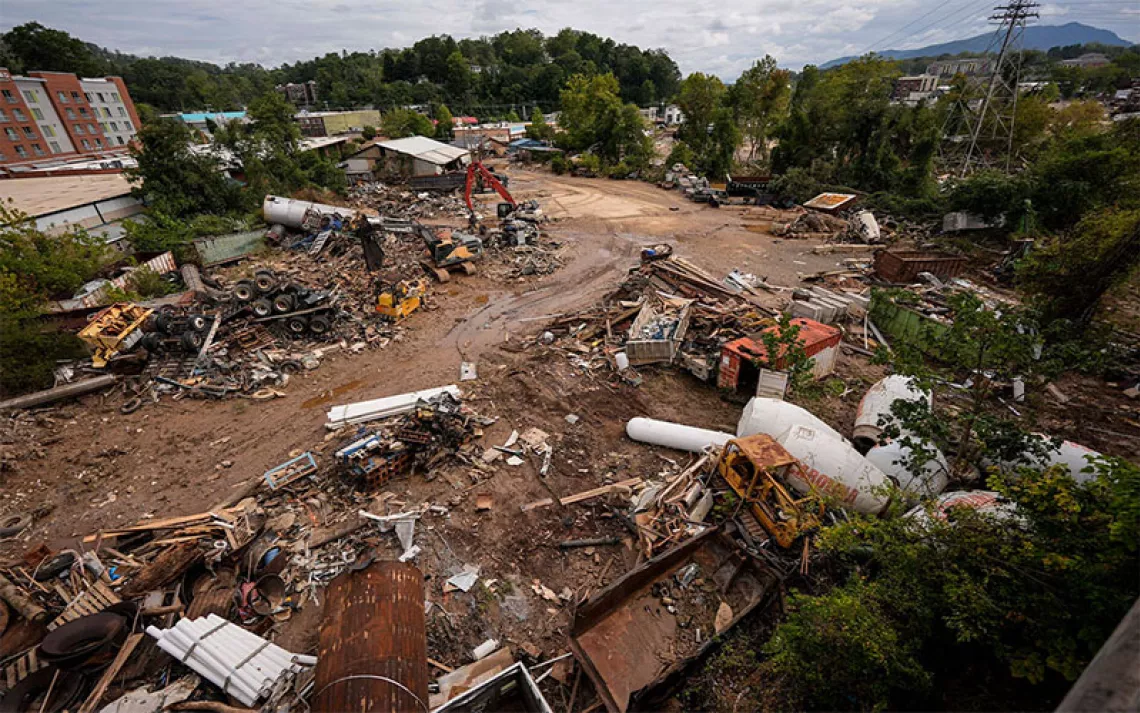Can 100 Percent Renewable Energy Cope With a Polar Vortex?
Spoiler: Yes, if we're prepared.

iStock/Matt Hotmer
When a polar vortex hit parts of the Midwest and Northeast at the end of January, it brought temperatures cold enough to cause frostbite on exposed skin in just five minutes and closed down schools and businesses. Demand for power was intense, and the internet erupted in arguments about whether transitioning to 100 percent renewable energy would leave people in the lurch in periods of extreme weather.
The conventional power grid survived the event without major customer disruptions or extreme surges in pricing. Fossil fuel advocates said this showed how important coal was to America’s energy security, contending that a utopian world of all-renewable energy would disappoint on days when it mattered most. Sierra asked energy experts about how a 100 percent renewable grid could cope with extreme weather such as we experienced in January. In general, they agreed, we’ll do just fine—as long as we’re properly prepared.
“This is straightforward,” said Mark Jacobson, professor of civil and environmental engineering at Stanford and the guy who created science-based, 100 percent clean energy roadmaps for the world. “It's just mandating a transition to clean renewable energy in all energy sectors—kind of what the Green New Deal is trying to do. We have to electrify all our energy sectors and then provide that electricity with land, water, and solar power.”
Iceland has an electric power sector that is 100 percent renewable, Jacobson noted, and it has more extreme cold than the United States. If they have solved the problem, he said, we can too.
Here are some lessons from what clean energy companies did during the polar vortex to silence the naysayers, and for what we need to do in the future as the grid becomes cleaner:
Weather affects all energy resources. Yes, wind turbines shut down at very low temperatures, and snow can collect on solar panels. But gas-fired power plants also have fuel shortages, and coal piles often freeze when stored outdoors. In Princetown, a small town north of Minneapolis, low pressure in the natural gas pipeline meant that the utility had to provide lodging and space heaters to customers until service could be restored.
Coal and nuclear plants are also volatile in extreme heat, something to contend with as the world warms. The plants require cooling, so when the available water is too hot, you have to shut them down.
It pays to be interconnected. Grid operators in the vortexed regions, PJM Interconnection and the Midcontinent ISO (MISO), had prepared for the cold with advisories about the weather. This alerted operators to end maintenance outages and postpone routine maintenance so that utilities could operate at peak if needed.
The interconnectedness of the grid system also provides advantages. “The transmission network we already have in place gives us a lot of opportunities to move energy around to where it's needed,” said John Farrell of the Institute of Local Self-Reliance. “So while the polar vortex was covering a fairly wide region, areas on the margins, which have more normal temperatures, might be able to export energy.” The grid can accommodate a lot more wind and solar, as long as it can move power between different regions via high-voltage transmission.
We can get by without natural gas . . . really. According to the Energy Information Administration, natural gas is the primary fuel used in the regions affected by the vortex for both residential and commercial space heating, and consumption reached record levels on January 30 because people stayed home to escape the biting cold.
“You can have a completely stable heating system that runs on renewables,” said Jacobson. Using solar in the summer to heat water with heat pumps and storing it in water pits or running it through the soil into a borehole field could store that heat for up to six months. “It won’t matter if your electric power goes down, because your heat is already stored,” he added. Denmark does this effectively, and smaller projects like Drake Landing in Canada have also succeeded. “It’s done in a lot of individual places, but we want systems in place to do this on a large scale,” Jacobson said.
Distributed energy sources provide security. Extreme temperatures are not the only issue we will have to deal with in a warming world. Whether it is a polar vortex, a heat wave, or a hurricane, distributed energy ensures we don’t have all our eggs in one basket. “We're going to have more resilience if we have more distributed energy resources, since more of our power generation will be local to us,” said Farell.
Wood Mackenzie, a consultancy, released a report about the performance of various energy sources during the polar vortex, and also suggested that distributed technologies would help reduce peak loads and the need for utility-scale storage.
“Puerto Rico was without power for 11 months and that's because you had 10 centralized fossil fuel plants instead of distributed wind and solar,” said Jacobson. In the post-Maria rebuilding, however, “their grid will be largely solarized with batteries, so if one portion goes down, the rest of them are still up.”
Better battery storage will help. The Wood Mackenzie report posits that to get through a polar vortex like the January 30 one on all-renewable energy, we would need between 18 and 40 hours of battery storage. At present, we only have affordable energy storage for a few hours. “Longer-duration energy storage technology is developing quickly, said Farrell. “Storage might not look that cost-effective right now, but in the long run we might be surprised.”
Customers can be incentivized to reduce demand. The fact that businesses and schools were closed during the vortex reduced peak demand significantly. According to Farrell, the gas company in Minnesota contacted all its customers and told them to turn down their thermostats so that they could keep the heat on.
“What we could do in the future is offer incentives to customers to be prepared to do that, so they are rewarded for their behavior,” said Farrell, “There's enormous potential there.” Already, some utilities offer such programs on hot summer days, so customers who agree to curb their electricity use get discounted bills.
Renewable technology needs to become hardier. At present, as temperatures rise, solar panels become less efficient. Batteries are also susceptible to heat and store less power when too hot. Wind turbines cannot operate below minus 22ºF (minus 30ºC), even when equipped with de-icing technology. To remain comfortable in the extreme weather events of the future, we need to invest in research to make panels and turbines more resilient.
 The Magazine of The Sierra Club
The Magazine of The Sierra Club



